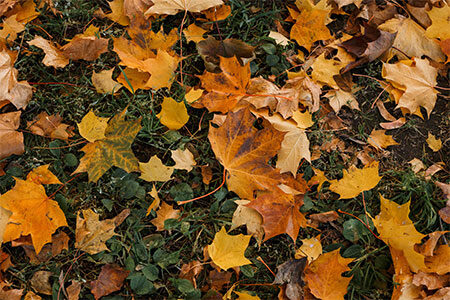
How to Care for Grass in Autumn and Winter?
Lawn care is a tough but rewarding job. When you see your lawn flourishing and giving lively vibes, all that hard work feels worth it. But effective lawn care doesn’t always have to be tiring. Read MoreLawn care is a tough but rewarding job. When you see your lawn flourishing and giving lively vibes, all that hard work feels worth it. But effective lawn care doesn’t always have to be tiring. Some pre-planning and following a schedule can keep your lawn alive and green throughout the year. Now that winters are almost here, it’s the best time for some lawn maintenance so that you can sweep through the cold months without working a lot.
So, if you want to retain your garden’s beauty during the cold season along with keeping the garden ornaments intact, read on to know more!
Autumn and Winter Grass Care Checklist
Following a checklist makes everything easier; lawn care is no exception. Whether you want to protect your grass, prepare the lawn for the upcoming germinating season, or protect your garden ornaments, here are a few steps for you to follow:
- Optimum Fertilizing
When cold nights kick in, providing lawn grass with a good-quality fertilizer is mandatory. A potent nitrogen-based fertilizer will strengthen your lawn grass and prepare it to wade through the frigid temperatures coming ahead. It’s best to use a fertilizer in the lawn six weeks before fall because it needs enough time to penetrate the soil. If you clear everything from the lawn before seeding a cool-season grass, sprinkle the fertilizer afterwards and let it be for a week.
- Regular Watering
Water will keep the budding grass alive and healthy, especially when there is frost in the air. Sure, overwatering the lawn during winters can be counterproductive; you still need to water it once a week to keep young grass alive. However, don’t pool water in the young grass because doing so can damage its roots. If the area you live in receives sufficient rainfall, watering the lawn fortnightly is good. Drain excess water from the birdbaths, and don’t let excess water pool in your precious garden ornaments.
- Trimming and Thatching
When the spring season is over, your lawn will be left with a thick layer of thatch and dried grass. Although leaving a layer of this dead organic matter on the soil protects budding grass from freezing, ignoring it altogether is not smart. It’s good to remove the thick thatch layer from the lawn soil and comb it. Trim the overgrown grass edges, remove the dead organic matter, and cover the beautiful garden ornaments to protect them from the cold season’s wrath. A clean and thin mulch layer is all your lawn soil needs to survive the frigid months, don’t let heaps of mulch be there.
- Flattening the Lawn and Garden Beds
Summer and spring lawn activities can make the ground uneven, resulting in the water pooling to certain spots. Before seeding a cool-season grass, it’s smart to flatten the lawn and garden beds so the water can equally move around. You can use a half-moon edging iron or a spade to flatten the ground and prevent uneven spots. Leaving the ground uneven can impact the growth of cool-season grass, something you won’t want for your garden.
Summing Up
Protecting lawn grass, garden ornaments, and flower beds is essential during cold months. It’s smart to develop a handy grass care checklist to keep a garden alive before the cold season. So, follow the above-listed tips and keep your garden’s beauty intact, no matter how cold it gets!
